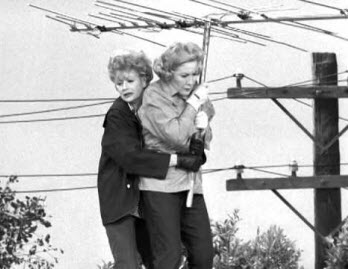Three Ways Broadband Can Increase Energy Savings and Efficiency

It wasn’t that long ago that people mainly used antennas to get TV signals over the air. They used phone lines to connect to the Internet, mainly through one desktop computer. They made calls over those same phone lines. A lot has changed since that time, and continues to change.
Now every household and office has multiple devices online at any given time. These devices are used for more data-intensive tasks: streaming video, voice-over-IP, video conferencing, watching TV.
A large amount of this traffic travels over broadband -- almost 800 million people worldwide use broadband to access the Internet, according to the Society for Broadband Professionals. And in North America, broadband use is expected to quadruple by 2020 based on research from the same organization. Since broadband uses electricity to transmit data, you won't be too surprised to learn that $1 billion in electricity is used for broadband access today in North America alone. Quadruple that and it’s a whopping $4 billion in 2020.
This growth is simply unsustainable. Currently, the world’s broadband power supplies can be divided into three generations. Generation No. 1, which were deployed between 1984 and 1997 and have line efficiencies of about 86%; Generation No. 2 (1999-2011) features line-interactive ferro technology for uninterruptable power – this technology holds energy long enough to cover the time between switching from line power to battery power, nearly eliminating transfer time and bumping line efficiency up to 89%. Generation No. 1 and No. 2 make up a vast majority of the power supplies used by broadband providers (up to 84% in North America, according to an Alpha case study). If this continues, subscribers will start to feel the squeeze, through higher prices and unreliable service.
Generation No. 3 power supplies have been around since 2012, and feature some very real upgrades that can help cut broadband power usage extensively. Cable operators have begun to deploy Gen. 3 power supplies, but the legacy technology in place provides plenty of room for improvement. The new power supplies decrease power by maximizing network efficiencies in three specific areas:
1. Line Efficiency (percentage of source power converted to available load power)
Improving line efficiency directly reduces energy consumption. Generation 3 transformers utilize intelligent tap switching right at the input. This optimizes performance and minimizes secondary saturation energy loss.
2. Inverter Efficiency (percentage of battery power converted to available load power)
Improvements in inverter efficiency increase battery run-time and reduce battery string count. By moving the inverter winding to the output side of the ferroresonant transformer, it can be isolated from the input winding, which gives the inverter power electronics protection from utility spikes and surges. This minimizes conversion losses in the transformer and improves inverter efficiency. Additionally, this improved efficiency decreases overall operating temperature of the power supply, eliminating the need for an internal fan to help maintain a safe operating temperature, which decreases points of possible wear and tear for longer life.
3. Output Voltage and Regulation
Output voltage and regulation gives each power supply greater reach, reducing network cable loss.
Through these efficiencies, generation No. 3 power supplies can up line efficiency to 94%, and inverter efficiency to 91%. Now, on a single power supply this may not seem like much – after all, each power supply doesn’t use that much energy. But, over a network of power supplies? Then the savings are very real, and something that can help the bottom line of any broadband supplier.
Broadband continues to make the world feel smaller, allowing people everywhere to communicate. However, the power needed to accommodate the large number of people using broadband is great. By upgrading to Generation 3 technology, broadband suppliers can decrease energy use.
Dean Tryon is the product manager at Alpha Technologies, a designer and manufacturer of power technology products. With more than 23 years in the power and electronics industry, Tryon has held previous engineering roles in manufacturing, sustaining, testing, and finally as an application engineer. He is a member of the SCTE, and part of the 2020 Energy Metrics, Data Collection & Reporting committee, responsible for defining energy metrics for facilities, outside plant, fleet, non-grid, financial and an overall company metric.
Multichannel Newsletter
The smarter way to stay on top of the multichannel video marketplace. Sign up below.



